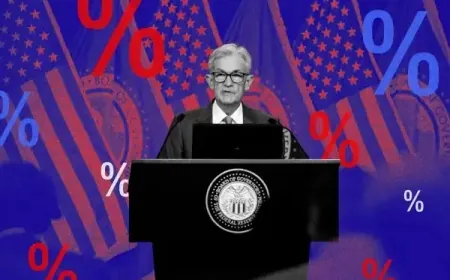Bitcoin in 5 Years: Where Could Its Price Go Next?
Bitcoin’s future is under the spotlight — with ETFs booming, inflation risks looming, and government policies in flux. Will it be a massive win or a shocking loss for investors by 2030?

Bitcoin’s future remains uncertain, but understanding the key factors influencing its price can provide insights for investors. From growing institutional support to economic challenges, here’s what could shape Bitcoin’s trajectory by 2030.
The Role of Bitcoin ETFs
The launch of spot Bitcoin exchange-traded funds (ETFs) has been a game changer for investors. ETFs like the iShares Bitcoin ETF Trust (NASDAQ: IBIT) offer an easier way to gain exposure to Bitcoin without navigating the complexities of cryptocurrency exchanges. With nearly $50 billion in assets within its first year, the popularity of ETFs highlights the growing mainstream acceptance of Bitcoin. If investor interest continues, these ETFs could drive substantial demand, contributing to Bitcoin’s price growth.
Supportive Government Policies
The Trump administration has shown a positive stance on cryptocurrency. Recent initiatives, such as the establishment of a crypto czar and plans for a strategic crypto reserve with Bitcoin as a key asset, indicate a willingness to integrate digital currencies into the U.S. financial system. If the government continues supporting cryptocurrency-friendly policies, Bitcoin’s market confidence and adoption could grow further.
Bitcoin as a Hedge Against Inflation
Economic uncertainty and inflation fears are driving more investors toward Bitcoin. With Trump’s proposed tariffs raising concerns about higher consumer prices, Bitcoin's fixed supply makes it an appealing hedge against inflation. Historically, during inflationary periods, assets like Bitcoin have seen price increases as investors seek alternatives to traditional currencies.
Risks and Economic Uncertainty
While Bitcoin has growth potential, it also faces significant risks. A recent survey of CFOs revealed that 75% expect a recession within the next year. Economic downturns tend to drive investors away from volatile assets like Bitcoin, which could lead to price declines. Additionally, while current regulations are relatively favorable, future regulatory shifts could negatively impact the cryptocurrency market.
What Could Bitcoin Be Worth by 2030?
Bitcoin’s past performance has been remarkable. Between 2014 and 2019, its value surged by over 1,700%, followed by an additional 1,100% gain from 2020 to today. While these returns are not guaranteed to continue, the increasing institutional adoption, policy support, and role as an inflation hedge suggest Bitcoin could remain a key player in global finance.
For cautious investors, allocating a small percentage (typically 5-10%) of a diversified portfolio to Bitcoin may be a prudent approach. While the road ahead may be volatile, Bitcoin’s resilience and increasing integration into traditional finance could shape a positive outlook over the next five years.
Also Read: BitcoinOS Plans to Make Bitcoin a Platform for Digital Property Ownership




























































